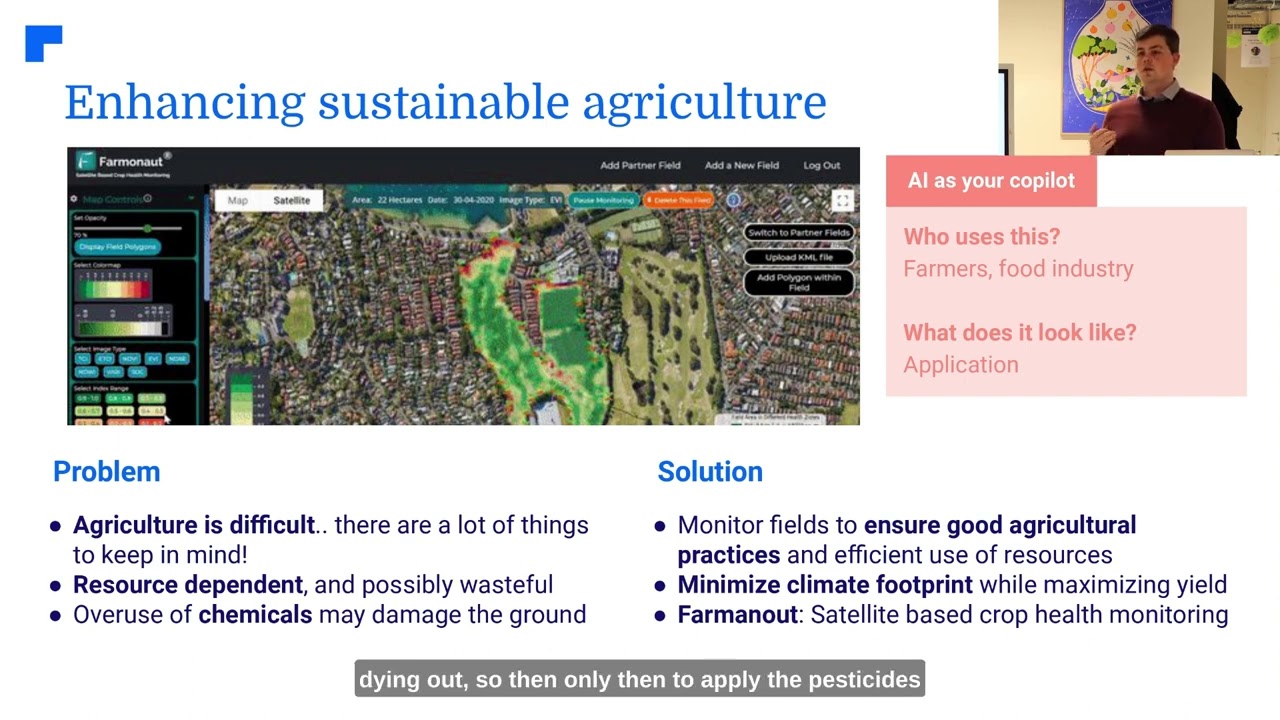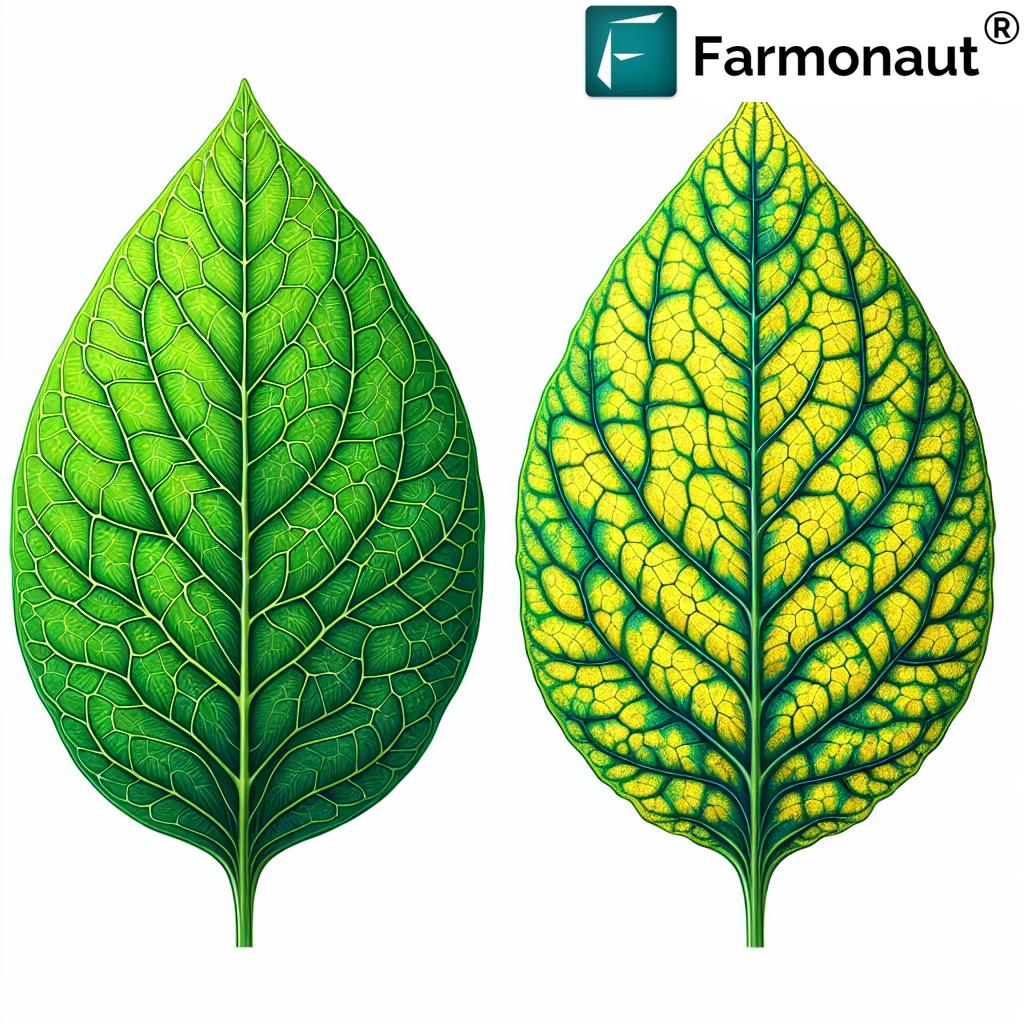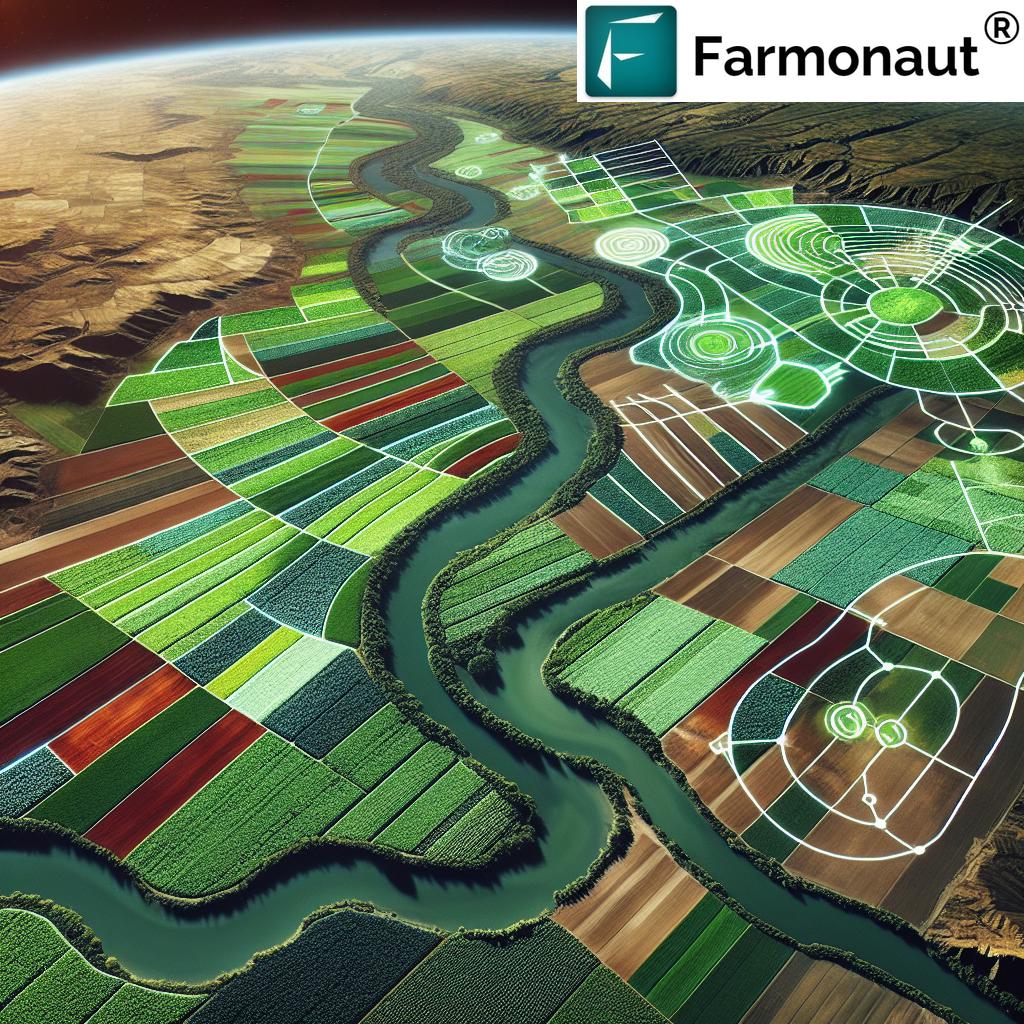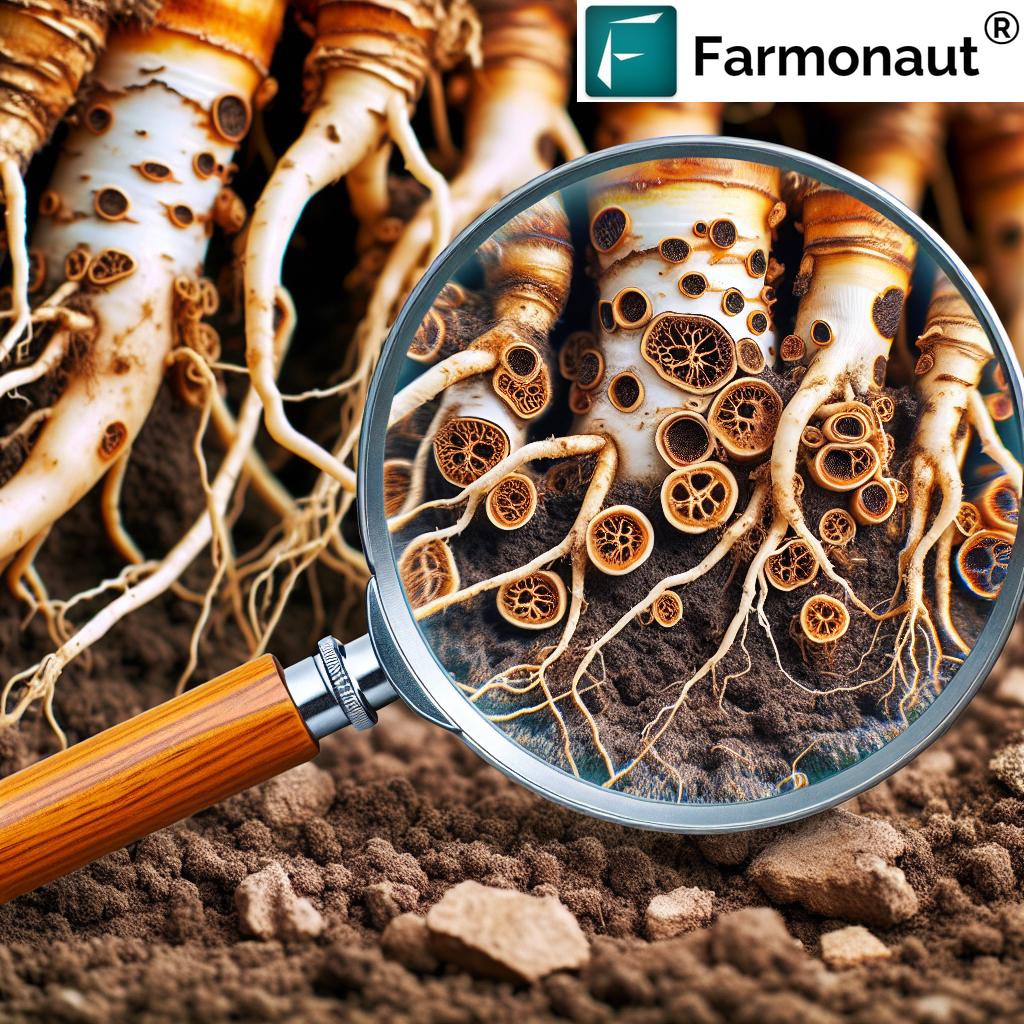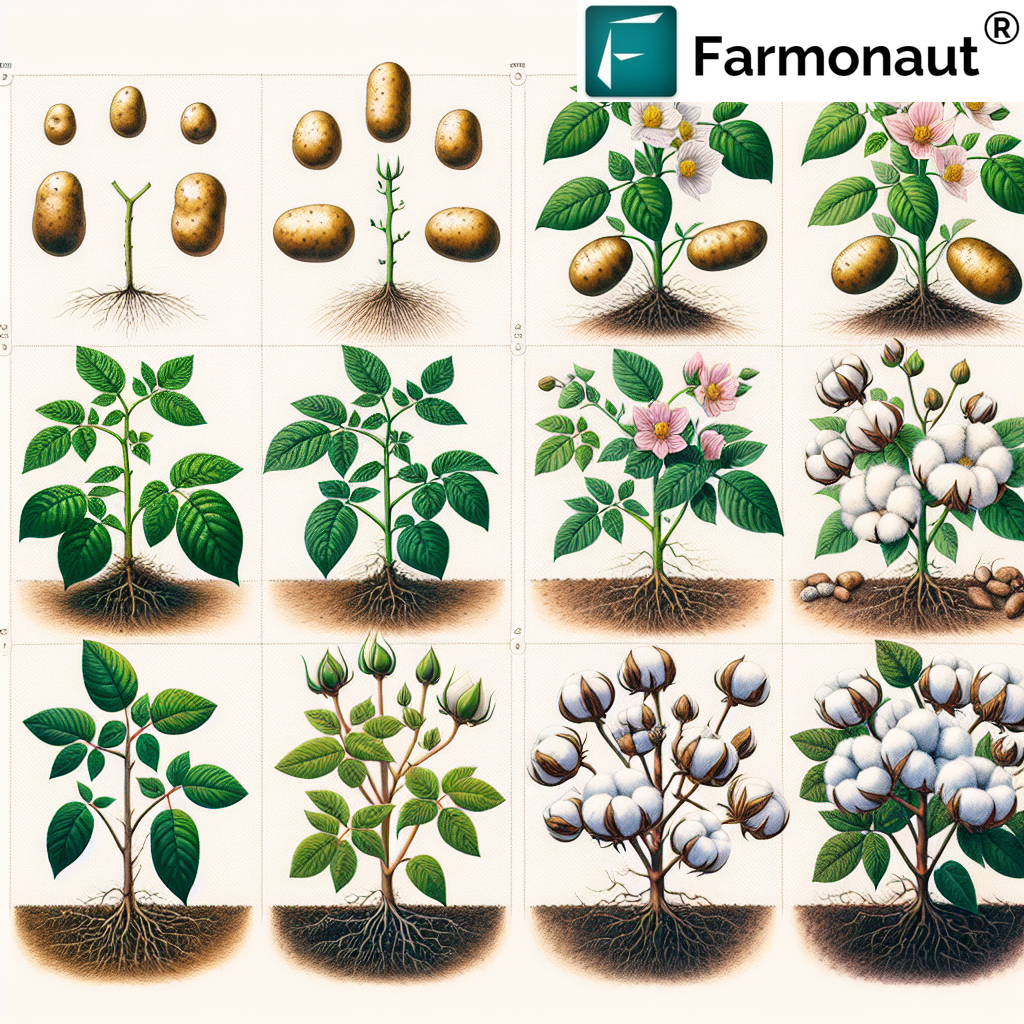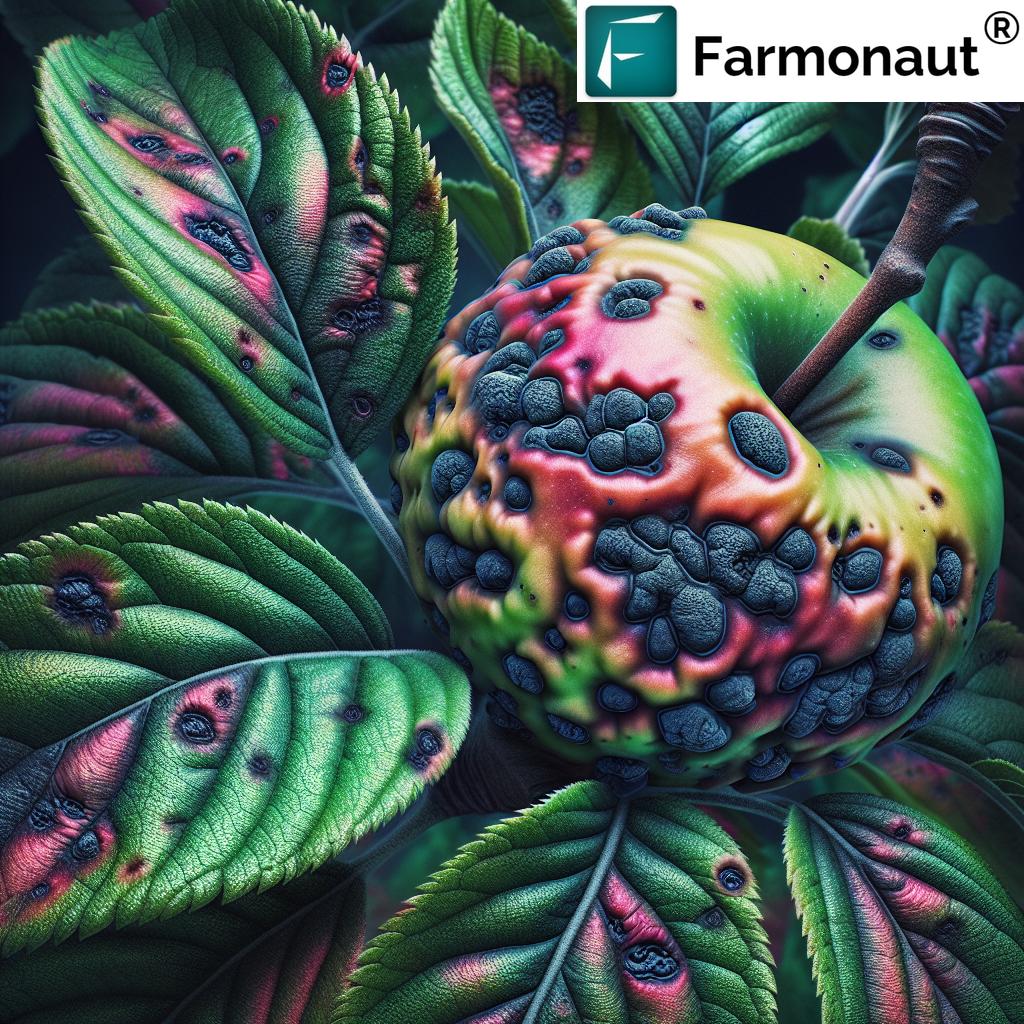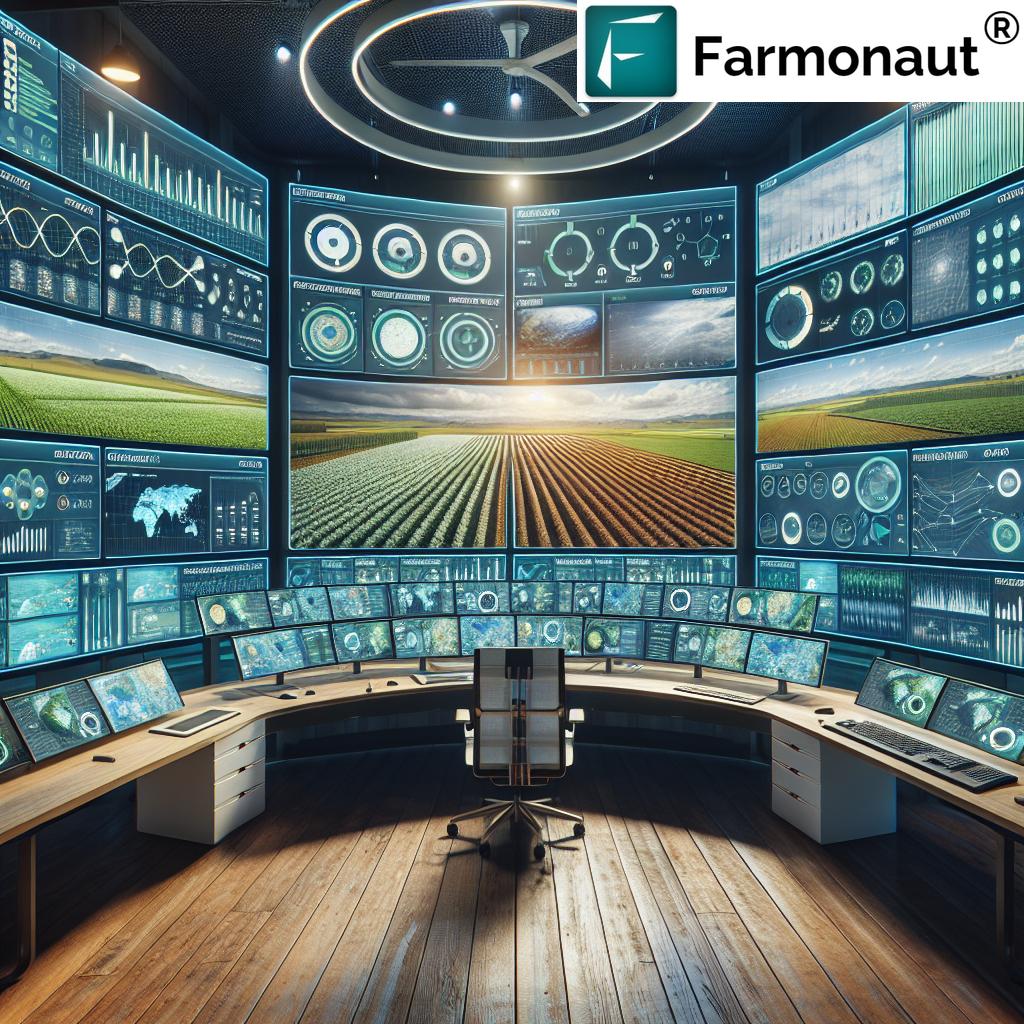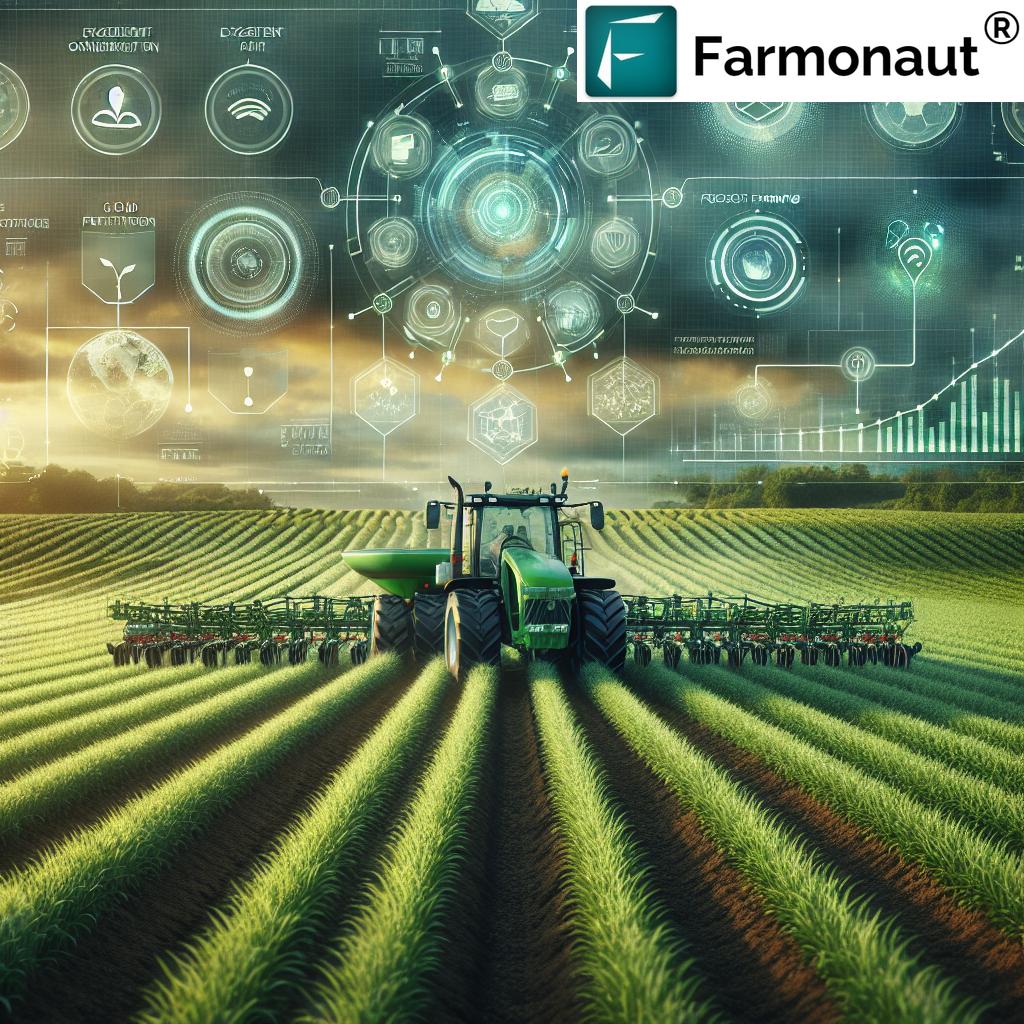Smart Farming Precision Farming: 7 Techs to Double Yields
Table of Contents
- Introduction to Smart Farming & Precision Agriculture
- Key Benefits of Smart Farming
- Top 7 Smart Farming Technologies that Double Yields
- Farmonaut: Satellite-Based Precision Agriculture
- Comparison Table: Smart Farming Technologies & Impact on Yields
- How to Get Started with Smart Farming Technologies
- Challenges and Considerations in Adopting Smart Farming
- The Future of Smart & Precision Agriculture
- FAQ: Smart Farming & Technologies
“AI-powered precision farming can increase crop yields by up to 70% compared to traditional methods.”
Introduction to Smart Farming & Precision Agriculture
As our world faces the dual challenge of feeding a growing population and minimizing environmental impact, the agricultural sector is undergoing a remarkable transformation. Smart farming, also known as precision agriculture, is at the forefront of this agricultural revolution. By integrating cutting-edge technologies such as the Internet of Things (IoT), Artificial Intelligence (AI), drones (UAVs), and advanced analytics, we are empowered to make informed, data-driven decisions that enhance productivity, sustainability, and profitability in farming.
In this comprehensive guide, we’ll explore the seven most impactful technologies in smart farming, illustrate their real-world benefits, and show you how platforms like Farmonaut are making precision agriculture accessible to all. We’ll also dispel common myths, highlight challenges, and provide expert insights for those ready to embrace the future of agriculture.
Key Benefits of Smart Farming and Precision Agriculture
Before we deep dive into the top technologies, let’s examine the vast advantages that smart farming and precision agriculture offer:
- Increased Efficiency: By streamlining agricultural operations with automated systems and data analytics, we reduce both labor costs and time spent on manual tasks, maximizing output per unit of input.
- Resource Conservation: Smart application of water, fertilizer, and pesticides ensures minimal waste and better use of resources.
- Environmental Sustainability: Reduced chemical runoff and emissions support healthier ecosystems and promote sustainable farming practices.
- Enhanced Yields and Quality: Data-driven decisions result in higher crop yields, improved quality, and optimized plant growth conditions.
- Risk Reduction: Early detection of crop diseases and weather risks ensures stronger protection for our farm investments.
- Greater Profitability: Optimized operations and yields mean improved margins and financial sustainability.
Smart Farming Precision Farming: 7 Techs to Double Yields
To truly harness the promise of modern agriculture, we must leverage a suite of advanced farming technologies. Here are the top seven innovations poised to double our yields and take farm management to a new level:
1. Internet of Things (IoT) in Agriculture
The Internet of Things (IoT) has revolutionized the way we monitor and manage agricultural processes. By deploying a network of sensors and actuators across fields, greenhouses, and equipment, we can collect real-time data on vital parameters like soil moisture, temperature, humidity, and crop health.
- Use: IoT devices constantly monitor environmental conditions and relay actionable insights to our smartphones or computer dashboards.
- Benefit: We can deploy water, fertilizer, and other inputs precisely when and where they’re needed, saving resources and reducing environmental impact.
- Impact: Automated irrigation, precise fertigation, and real-time pest monitoring enable higher efficiency and improved yields in every field.
Learn more about affordable IoT-based crop health and soil management with Farmonaut’s platform, accessible on Android, iOS, and web.
2. Artificial Intelligence in Farming
Artificial Intelligence (AI) and Machine Learning (ML) are central to the evolution of precision agriculture. By analyzing vast datasets from IoT sensors, weather forecasts, satellite imagery, and historical yields, AI models draw actionable patterns and optimize farm operations in ways that humans simply cannot match.
- Use: AI-driven platforms can predict crop yields, detect diseases, and recommend the optimal time for planting and harvesting.
- Benefit: AI-based advisory systems, like Farmonaut’s Jeevn AI, provide tailored strategies, weather alerts, and proactive management directly to our devices.
- Impact: With AI, we rapidly adapt to changing weather, soil, and market conditions, ensuring resilient and profitable outcomes.
Trivia: “Smart sensors in agriculture can reduce water usage by 30% while maintaining optimal plant growth.”
3. Drones and UAVs for Crop Monitoring
Unmanned aerial vehicles (UAVs), or drones, are game-changers for crop monitoring and field assessments. With multispectral cameras and high-resolution imagery, drones help us swiftly monitor large tracts of land, identify pest infestations, water stress, and more.
- Use: Drones for crop monitoring regularly scan fields in minutes. We assess planting, optimize input application, and quickly spot anomalies or issues.
- Benefit: Proactive interventions stop minor problems (like pests or nutrient deficiency) before they escalate, minimizing losses.
- Impact: Drones make real-time, large-scale monitoring a reality, even for small and medium-sized farms.
Farmonaut’s advanced satellite technology provides many of the same benefits as drone imagery—covering vast areas without requiring hardware investment. Learn more about large-scale farm management with Farmonaut.
4. Variable Rate Technology (VRT)
Variable Rate Technology (VRT) allows us to automatically apply the optimal amounts of fertilizers, pesticides, or water at varying rates across different sections of a field. This tech leverages real-time data to ensure that each area receives exactly what it needs—no more, no less.
- Use: VRT-enabled machinery uses field maps derived from satellite images, soil scans, or drone data to deliver targeted inputs based on specific needs.
- Benefit: We cut waste, lower costs, and minimize environmental impact by avoiding blanket application.
- Impact: VRT is a cornerstone of sustainable precision agriculture—boosting yields without sacrificing long-term soil and water health.
Variable rate technology paired with Farmonaut’s satellite-informed maps can help us tailor our input application for each zone on our farm.
5. Precision Seeding
Precision seeding is the art of planting seeds at precise depths and spacings, customized to each section of land. Accurate seeding ensures uniform plant emergence, optimal root development, and maximizes each seed’s yield potential.
- Use: Automated planters, guided by field data, plant at just the right depth and interval, overcoming natural variability and weather effects.
- Benefit: This method enables us to minimize seed waste, ensure even stands, and create the best conditions for robust plant growth.
- Impact: Ultimately, precision seeding leads to higher yields and better resource conservation.
For insights on how satellite data can guide precision planting strategies, check out Farmonaut’s advisory system.
6. Satellite Imagery and Remote Sensing
Thanks to affordable and accessible satellite imagery and remote sensing platforms, we can now monitor entire farms or regions at regular intervals—without stepping into the field. These solutions deliver critical insights into vegetation health (e.g., through NDVI indices), soil moisture, and even carbon footprint tracking.
- Use: Frequent, high-resolution maps let us track crop growth trends, spot anomalies, and compare season-to-season progress from any connected device.
- Benefit: We detect issues as soon as they arise, reducing risk and improving the timeliness of our interventions.
- Impact: Data from platforms like Farmonaut can lead to a 10–30% increase in harvested yield, thanks to early warning and targeted management.
Farmonaut specializes in satellite-based farm management, giving individual farmers and agribusinesses the ability to make decisions based on current and historical field data.
7. Robotics and Farm Automation
The growing adoption of robotics—ranging from automated tractors and harvesters to weeding bots and fruit-picking drones—marks the next frontier in smarter, safer, and more efficient farming operations.
- Use: Robotics automate repetitive or hazardous tasks such as planting, spraying, and harvesting, using machine vision and AI to adapt to real world field conditions.
- Benefit: Labor shortages are no longer a bottleneck, and consistency and accuracy in farming practices improve exponentially.
- Impact: These innovations contribute to higher yields and lower operational costs, making them essential for future-proofing farms.
Through data APIs like Farmonaut API and API developer documentation, agricultural robotics companies can power automation with real-time satellite and weather information for optimized operations.
Farmonaut: Satellite-Based Precision Agriculture, AI, and More
Farmonaut stands out as a leader in providing affordable, accessible, and advanced tools for smart farming. By leveraging a combination of satellite imagery, AI, blockchain, and resource management systems, Farmonaut enables farmers across scales to benefit from:
- Real-time crop health monitoring using satellite-based NDVI, soil moisture mapping, and more
- AI-driven crop advisory (Jeevn AI) with location-customized recommendations for maximizing productivity and minimizing risk
- Blockchain-based product traceability for secure and transparent supply chains (learn more about traceability on Farmonaut)
- Fleet and resource management to optimize logistics and reduce machinery costs (see Farmonaut fleet solutions)
- Carbon footprint tracking for a more sustainable agricultural practice (Farmonaut’s carbon footprint module)
- Crop loan and insurance verification via satellite-based field reports (understand the benefits for farmers and lenders)
The Farmonaut platform operates through flexible subscription plans for web, Android, and iOS. We also provide integration via API, serving individuals, cooperatives, large agribusinesses, governments, and financial institutions. With Farmonaut, precision farming is no longer out of reach for small and medium-sized farmers.
Comparison Table of Smart Farming Technologies and Their Impact on Yields
| Technology Name | Core Function | Estimated Yield Improvement (%) | Sustainability Benefits | Example Application/Use Case |
|---|---|---|---|---|
| IoT Sensors | Real-time monitoring of soil, weather, and crop health via sensors/actuators | 15-25% | Reduced water/fertilizer usage, optimized input application | Automated irrigation and fertigation based on soil moisture data |
| AI Analytics | Predictive modeling, disease detection, advisory systems | 20-70% | Reduced pesticide/fungicide use, precise advisory | Jeevn AI for crop planning & weather alerts |
| Drones (UAVs) | Aerial imaging and monitoring of fields for crop health and stress | 10-30% | Targeted pest/disease management, early issue detection | Mapping pest infestations for variable spraying |
| Satellite Imagery | Wide-area remote sensing, NDVI mapping, crop/soil analysis | 10-30% | Reduced input waste, informed decision-making | Farmonaut satellite monitoring for crop health |
| Robotics | Automated field operations (planting, harvesting, weeding) | Up to 35% | Less chemical use, energy efficiency, labor savings | Self-driving tractors for smart seeding/harvesting |
| Variable Rate Technology (VRT) | Site-specific, optimized variable input application | 15-25% | Minimized runoff, resource efficiency | Fertilizer/pesticide application based on data maps |
| Remote Sensing | Field and environmental monitoring without physical contact | Up to 20% | Timely interventions, improved sustainability | Early disease detection through satellite/drone images |
How to Get Started with Precision Agriculture & Smart Technologies
Transitioning to smart farming may seem overwhelming, but scalable solutions like Farmonaut make it accessible for all. Here’s how we can begin:
- Assess your needs: What are your yield goals? Which crops and environmental issues are you facing?
- Start small, scale fast: Begin with one or two technologies—such as satellite crop health monitoring from Farmonaut or IoT soil sensors. Evaluate the impact, and expand gradually.
- Leverage platforms: Choose integrated apps or services that give you actionable insights without complex hardware. Farmonaut offers web, Android, and iOS access plus detailed API documentation for custom solutions.
- Access training and support: Many providers, including Farmonaut, offer guides and knowledge bases to help us build technical skills and make confident decisions.
- Monitor, optimize, repeat: Agriculture is dynamic. By monitoring progress, learning from results, and updating our approach, we build a resilient and successful smart farm.
Ready to transform your farm?
Challenges and Considerations in Smart Farming
Despite the demonstrated benefits and potential to rapidly increase yields, implementing advanced farming technologies brings real challenges:
- High Initial Investment: Certain smart devices and robotics carry significant up-front costs, though app-based and subscription offerings—like Farmonaut’s—help lower entry barriers.
- Data Management: Efficient processing and interpretation of large data volumes require robust digital infrastructure and skilled people.
- Connectivity: Reliable internet is a must for IoT, AI, and cloud-based solutions. Rural infrastructure may need upgrades.
- Technical Training: Onboarding farmers and agribusiness staff to new tools and digital management practices is critical.
- Change Management: Adjusting traditional mindsets and routines to data-driven farming takes time, patience, and demonstration of value.
Platforms such as Farmonaut bridge these gaps by offering:
- Subscription-based pricing for field and resource monitoring
- APIs for integration into existing systems—ideal for developers
- Easy onboarding and technical support for all scales of farmers
For organizations managing multiple plantations and resources, Farmonaut’s large-scale farm management solutions are invaluable for streamlining satellite-based operations.
The Future of Smart Farming & Precision Agriculture
The future of agriculture is undeniably smart, connected, and sustainable. Global demand for food, pressure on natural resources, and climate fluctuations necessitate a shift toward precision agriculture and environmentally friendly farming.
Ongoing advancements in AI, IoT devices, robotics, and remote sensing will continue to optimize crop production, reduce input waste, and support better stewardship of the land. Solutions like Farmonaut are paving the way for democratized access to data-driven farm management—empowering farmers of every size to thrive.
- Precision tools and data will become more affordable and user-friendly.
- The convergence of blockchain, AI, and IoT will further enhance trust, traceability, and productivity.
- Sustainability and resource conservation will stand at the center of every technological innovation.
- Farmers will transition from reactive to predictive and proactive farming practices.
In summary: Embracing the power of smart farming is not only a means of doubling yields and boosting profitability—it’s how we steward our soil, water, and climate for generations to come.
Farmonaut Subscription Plans: Digitize Your Farm Management
Ready to make your farm smarter and more productive with affordable, data-driven technology? Explore Farmonaut’s flexible subscription plans and bring precision agriculture to your fields today!
FAQ: Smart Farming, Precision Agriculture, and Farmonaut
What is smart farming?
Smart farming refers to using advanced technologies such as IoT, AI, drones, and satellite imagery to optimize agricultural operations, improve productivity, and enhance environmental sustainability.
How does precision agriculture differ from traditional farming?
Precision agriculture makes use of data-driven insights, targeted input application, and real-time field monitoring, in contrast to traditional methods that often apply resources uniformly and reactively. This results in higher yields, reduced waste, and sustainable practices.
Is smart farming only for large-scale farms?
No, many solutions, especially app-based and subscription models like Farmonaut, are accessible and affordable for small and medium-sized farmers. The platform’s satellite monitoring and AI advisory services do not require investment in expensive hardware.
What is the estimated yield improvement with smart farming technologies?
Studies and field results show that integrating AI-powered precision farming, IoT sensors, and other smart technologies can improve crop yields by 20%–70%, depending on crop type, region, and extent of technology adoption.
What devices do I need for Farmonaut or similar platforms?
Farmonaut can be accessed through any modern smartphone (Android/iOS) or browser. No specialized hardware is required for basic monitoring and advisory services, making it highly accessible.
How do I get started with Farmonaut?
Simply sign up for an account (web, Android, or iOS app), select your fields, and start monitoring your crops instantly. For enterprise or developer integration, explore our Farmonaut API and detailed documentation.
Conclusion: Embracing the Smart Farming Revolution
The future of agriculture belongs to those who embrace innovation, sustainability, and data-driven farm management. By integrating cutting-edge technologies—from IoT and AI to satellite-based platforms like Farmonaut—we empower ourselves to double yields, optimize resources, and protect our planet for generations to come. Whether you’re a small farmer, agribusiness, or policymaker, the tools you need for a smarter, more productive farm are just a click away.
Take the first step: Try Farmonaut for precision farming today!







